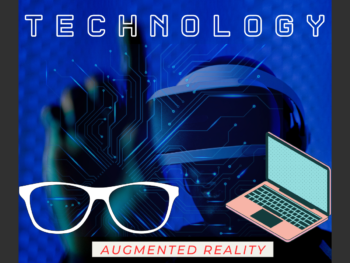Augmented reality (AR) is a technology that superimposes computer-generated images onto a user’s view of the real world, creating a composite view. It has a wide range of applications in industries such as education, gaming, marketing, and entertainment. AR is a rapidly growing field that is expected to have a significant impact on our perceptions and the way we interact with the world around us. In this blog post, we will explore how augmented reality is affecting our perceptions and changing the way we see the world.
How Augmented Reality Works
Augmented reality uses a combination of hardware and software to superimpose digital content onto the real world. This technology requires a device such as a smartphone, tablet, or headset with a camera and a screen. The camera captures the real-world environment, and the software processes the data to overlay digital content onto the real-world image. The result is a composite view that blends the real and virtual worlds, creating an augmented reality experience.
Impact on Our Perceptions
Augmented reality has the potential to transform the way we perceive the world around us. It can enhance our senses, change the way we interact with objects, and provide new experiences. Some of the ways augmented reality is affecting our perceptions include:
- Enhanced Sensory Perception: AR can provide an enhanced sensory experience by overlaying digital content onto the real world. This can create a more immersive and engaging experience that stimulates the senses and enhances our perceptions.
- Changing Our Perception of Objects: AR can change the way we perceive and interact with objects. For example, AR can provide a 3D visualization of an object, allowing us to view it from different angles and explore its features in greater detail.
- Creating New Experiences: AR can create new experiences that were previously impossible. For example, AR can provide a virtual tour of a historical site or allow us to interact with digital characters in real-world environments.
- Altering Our Perception of Reality: AR can alter our perception of reality by superimposing digital content onto the real world. This can create a new reality that is different from our traditional understanding of the world around us.
Applications of Augmented Reality
Augmented reality has a wide range of applications in industries such as education, gaming, marketing, and entertainment. Some of the applications of augmented reality include:
- Education: AR can be used to create interactive educational experiences that enhance learning and engagement.
- Gaming: AR can create immersive gaming experiences that blend the real and virtual worlds.
- Marketing: AR can be used to create interactive marketing campaigns that engage customers and promote products.
- Entertainment: AR can provide new forms of entertainment such as virtual concerts, interactive exhibitions, and immersive theater experiences.
Conclusion
In conclusion, augmented reality is a rapidly growing technology that has the potential to transform the way we perceive and interact with the world around us. AR can enhance our senses, change the way we interact with objects, and create new experiences. As the technology continues to evolve, we can expect to see further advancements in augmented reality that will further impact our perceptions and change the way we see the world.











